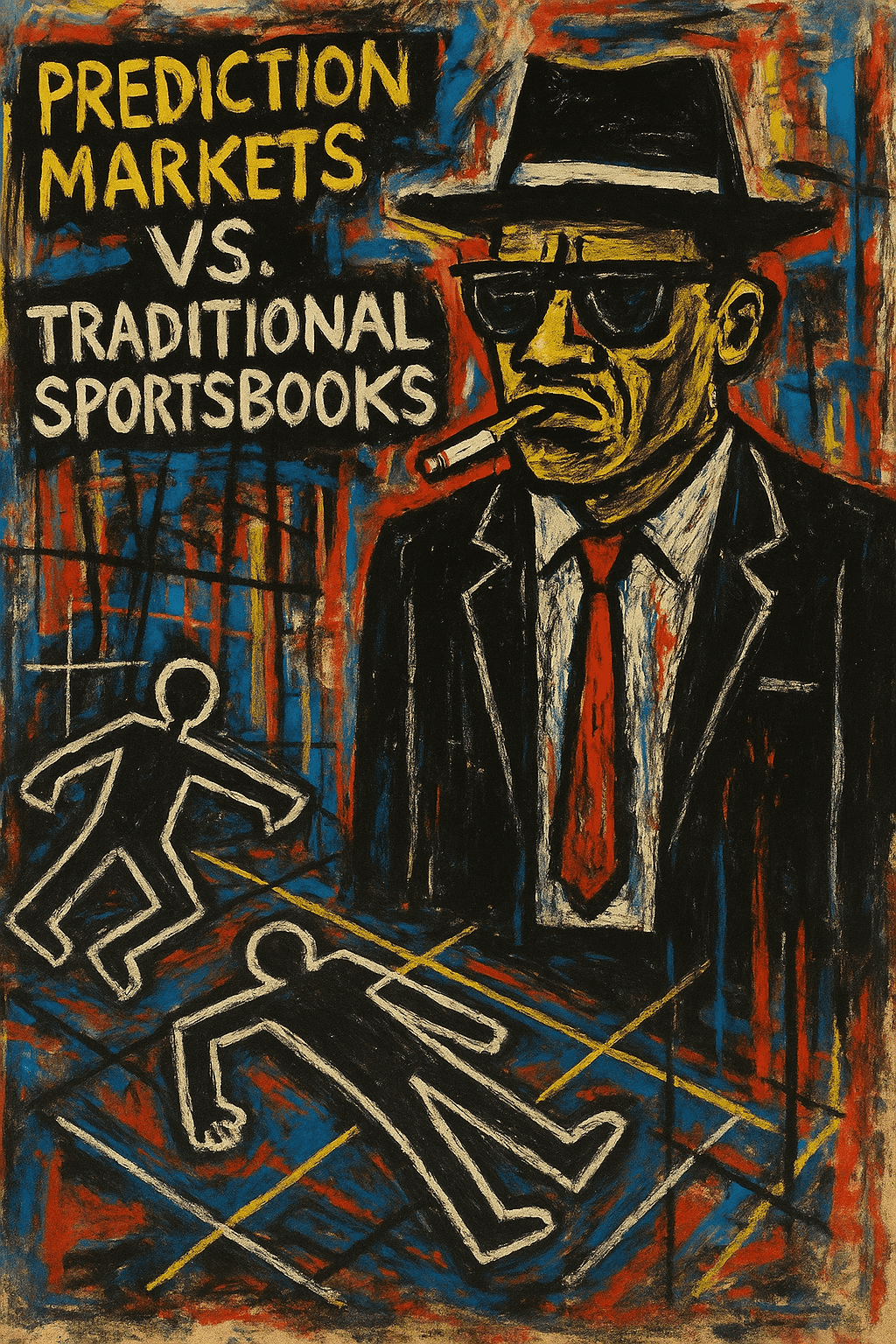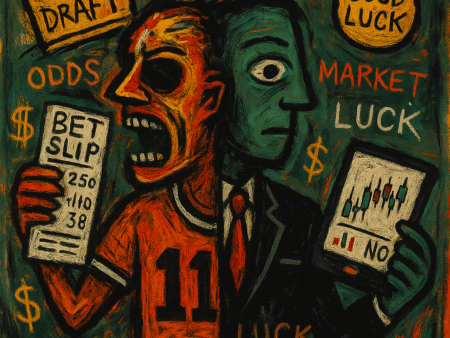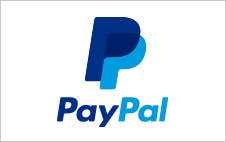By LuckyBets Sports Desk
In early 2025, an increasing number of bettors are turning away from traditional sportsbooks and looking to prediction markets—platforms where users wager directly against one another on the outcome of events. Search interest in “Kalshi sports betting” has jumped over 2,300% in the past month, while “Polymarket how to bet” queries are surging by 1,500%. Prediction markets are no longer a fringe curiosity; they’ve gone mainstream as Americans seek lower fees, novel markets, and the opportunity to trade on virtually anything from the NFL MVP to the next U.S. presidential nominee.
In this deep dive, we’ll explain:
- What prediction markets are—and how they differ from sportsbooks
- How to place a bet (or trade) on Kalshi, Polymarket & similar platforms
- The legal landscape for U.S. bettors
- Advantages and drawbacks of prediction markets
- Key strategies and best practices
By the end, you’ll understand why prediction markets have captured widespread attention—and whether they’re right for your wagering portfolio.
1. What Is a Prediction Market?
Prediction markets (also called event markets or contract markets) are financial-style exchanges where participants buy and sell “shares” of a specific outcome. Unlike sportsbooks, which set odds and take the opposite side of every bet, prediction markets simply match buyers and sellers—users create two-sided markets on binary outcomes (e.g., “Will the Kansas City Chiefs win Super Bowl LIX?”). Each contract is priced between $0.00 and $1.00 (in U.S. dollars), where $1.00 pays $1 if the event occurs and $0 if it does not.
For example, if the market for “Chiefs win Super Bowl LIX” trades at $0.65, that implies a 65% market-implied probability. You can buy a contract for $0.65 per share; if the Chiefs win, you collect $1 per share, netting $0.35 profit. If they lose, your contract expires worthless. Conversely, you can short the contract (sell a share you don’t own) at $0.65; if the Chiefs lose, you pocket $0.65 per share; if they win, you owe $1.
Key distinctions from sportsbooks:
- Peer-to-peer (P2P) liquidity: Users set their own prices; the platform merely facilitates matching.
- Dynamic bid/ask spreads: Prices can update in real-time based on supply and demand rather than fixed vigorish (“vig”) margins.
- Broader market universe: You can bet on non-sports topics—e.g., “Will a federal interest rate hike occur before August 2025?”
- Continuous market access: Trade contracts any hour the market is open; no halftime lockouts.
Platforms such as Kalshi and Polymarket have built slick user interfaces atop this P2P model, making it easy for novices to buy and sell binary contracts in a way that feels similar to trading stocks.
2. How to Bet on Kalshi, Polymarket & Others
Below is a step-by-step guide for placing your first prediction-market wager:
A. Choose a Platform
- Kalshi (kalshi.com): CFTC-regulated exchange based in New York. Offers both sports-related contracts (e.g., “Will Novak Djokovic win Wimbledon 2025?”) and macro-economic questions (e.g., “Will the U.S. enact student debt forgiveness by December 31, 2025?”).
- Polymarket (polymarket.com): Built on blockchain (Ethereum), Polymarket’s “markets” cover politics, sports, weather, tech milestones, and more. Users deposit USDC (a U.S. dollar–pegged stablecoin) to trade.
- Others: Sportingtrade, DuneX, and older platforms like PredictIt (though limited to political questions) follow similar mechanics.
B. Create and Fund Your Account
- Registration: Sign up—Kalshi requires KYC (ID verification) since it’s fully regulated; Polymarket only needs a crypto wallet like MetaMask.
- Deposit Funds:
- Kalshi: Link a bank account or debit card; deposit USD directly.
- Polymarket: Transfer USDC or Ethereum (ETH) into your wallet; then convert to USDC.
C. Select a Market & View the Order Book
- Browse Listings: Navigate to the “Sports” or “Tennis” category for sports-related markets. On Kalshi, you’ll find questions like “Will LeBron James play at least 50 regular-season games in 2025–26?”
- Examine Bid/Ask Prices: Each market shows current “Yes” and “No” bids—e.g.,
- Yes @ $0.62 / No @ $0.38
- The spread indicates market sentiment (more liquidity on “Yes” means traders expect the event to occur).
D. Place an Order
- Buy “Yes” or “No”: Click the desired contract side, enter the number of shares (contracts) you want to buy, and review the total cost (number_of_shares × price_per_share).
- Set a Limit or Market Order:
- Market Order: Fills at the best available price immediately (risk: slippage).
- Limit Order: Sets a maximum purchase price or minimum sale price; may not fill right away.
- Confirm & Submit: After submission, your order sits in the order book until matched. Once it fills, you own the contract(s).
E. Monitor & Close Your Position
- Live Dashboard: Watch the “Yes” and “No” odds update in real time. As new information emerges or sharp bettors act, the price may shift.
- Sell to Exit: If you originally bought “Yes” and the price rises to $0.80, you can sell your contract for $0.80, locking in a $0.18 profit per share.
- Let it Expire: If you hold until the event resolves, the platform automatically settles at $1 if the outcome occurs or $0 if it doesn’t.
Example: Betting on the NBA Finals on Kalshi
- Navigate to “Sports → NBA → NBA Finals Winner”
- Choose “Oklahoma City Thunder” (Yes price @ $0.45)
- Buy 100 shares at $0.45 each (cost $45).
- If OKC wins, your position pays $100, netting $55; if they lose, you lose your $45 stake.
3. Are Prediction Markets Legal in the U.S.?
Legal status varies by platform and jurisdiction:
Kalshi: Fully Regulated
- CFTC-Approved: Kalshi obtained approval from the Commodity Futures Trading Commission (CFTC) in 2020, making it one of the only U.S.-based, federally regulated prediction exchanges.
- Available Nationwide: Anyone in the U.S. can open an account, fund in USD, and trade CFTC-sanctioned “event contracts.”
- Limits: Institutional traders (hedge funds) are permitted, but Kalshi caps retail position sizes to protect liquidity.
Polymarket: Semi-Regulated (Blockchain)
- On-Chain Pseudonymity: Because Polymarket operates on Ethereum, users can trade pseudonymously—no KYC—so long as their wallet isn’t flagged.
- CFTC Umbra: In early 2024, Polymarket agreed to a deferred action with the CFTC; it can continue operating while the agency studies broader regulation.
- U.S. Access: Americans can still trade, though future regulation could close this loophole. If you’re concerned, consult a securities attorney before trading.
Other Platforms:
- PredictIt: Limited to political event trading up to $850 max per contract, under an exemption for non-profit educational use.
- EthTrade/DAO Markets: Smaller pools with no clear regulatory framework—higher risk of closure or seizure by authorities.
Key Takeaway:
- Kalshi is the safest bet for U.S. retail traders seeking legitimate prediction markets.
- Polymarket offers broader markets (sports, crypto, politics) but comes with regulatory uncertainty and crypto volatility.
- Every bettor should be aware that on-chain markets like Polymarket could be shut down or forced to restrict U.S. users if the CFTC steps in.
4. Why Bet on Prediction Markets? Advantages & Drawbacks
A. Advantages
- Lower Fees & Tighter Spreads
- Kalshi charges a flat $0.02 fee per contract traded (Buy and Sell), whereas traditional sportsbooks build a 10–15% “vig.”
- On Polymarket, trading fees are determined by gas costs and a small protocol fee (often under 1%).
- Pure Price Discovery
- Because orders come directly from traders, you often see sharper, more efficient odds—particularly on high-liquidity events.
- You effectively “trade” against other market participants rather than vs. a sportsbook’s internal algorithm.
- Broader Event Universe
- Beyond sports: prediction markets let you wager on outcome of geopolitical events, economic indicators, pop culture moments—even whether a major tech CEO will resign by Q3. This novelty draws in users who want more than just sports lines.
- 24/7 Market Access
- No halftime blackout or “lock” windows: as long as the market is open (Kalshi’s hours vary by event), you can enter/exit. Polymarket never sleeps, aside from occasional Ethereum congestion.
B. Drawbacks
- Lower Liquidity on Niche Markets
- While high-profile questions (e.g., “Will the U.S. hit 300 unemployment claims per week?”) may see heavy trading, obscure bets (e.g., “Will Taylor Swift release a surprise album this weekend?”) may have few counterparties, resulting in wide spreads or unfilled orders.
- Higher Volatility & Price Gaps
- On Polymarket, a single large order can move the price dramatically if liquidity is thin—leading to slippage.
- Markets can “flash-crash” if news breaks suddenly, forcing rapid price changes.
- Regulatory & Custody Risk
- Polymarket funds are held in self-custodial wallets; if you lose your private key or something happens to the platform, you may be unable to recover funds.
- Future CFTC or SEC crackdowns could freeze or ban on-chain trading.
- Learning Curve
- Many sports bettors are unfamiliar with “shorting” a binary contract.
- Limit vs. market orders, gas fees (Polymarket), and margin rules (if offered) add complexity that casual bettors don’t see on DraftKings.
5. Step-by-Step: Placing Your First Kalshi Trade
Below is a quick tutorial to get you started on Kalshi—a CFTC-sanctioned exchange—so you can experience prediction markets with minimal risk.
A. Create & Fund Your Kalshi Account
- Sign Up: Go to Kalshi.com, click “Sign Up,” and complete KYC verification (ID, address, SSN).
- Deposit USD: Link a bank account or debit card; minimum deposit $50. Funds appear in your Kalshi balance within minutes.
B. Choose a Market
- Navigate to “Sports”: Click “Markets,” then filter by “Sports → NBA.” You might see a question like “Will Simu Liu become NBA Rookie of the Year for 2025–26?”
- View Order Book: Suppose “Yes” is trading at $0.30 and “No” at $0.70—this implies the market thinks there’s a 30% chance.
C. Place a Buy Order
- Select “Yes”: Click the “Buy Share of Yes” button.
- Enter Quantity: Suppose you buy 50 shares at $0.30 each: total cost = $15.00.
- Confirm the Trade: Hit “Submit.” Your order will fill at $0.30 if liquidity exists. If not, you can adjust to a higher limit (e.g., $0.32) or wait for the price to move.
D. Monitor & Sell to Exit
- Watch Real-Time Updates: Kalshi’s interface shows “Last Trade Price,” “Bid,” and “Ask.” If sentiment shifts to $0.40, you could sell your 50 “Yes” shares at $0.40, earning $5 profit ($0.40 – $0.30 = $0.10 × 50).
- Let It Expire (Alternative): If you hold through resolution, the contract automatically pays $1 per share if “Yes” wins or $0 if it loses.
6. Comparison to Traditional Sportsbooks
| Feature | Prediction Markets | Traditional Sportsbooks |
|---|---|---|
| Counterparty | Other traders (P2P) | The sportsbook (house) |
| Odds Format | Price between $0.00 – $1.00 | American, Decimal, Fractional |
| Fee Structure | Kalshi: $0.02/contract; Polymarket: gas + small fee | 10–15% vig built into lines |
| Markets Available | Broad (sports, politics, economics, crypto) | Primarily sports, limited props |
| Liquidity | Variable; high on marquee events | Generally very high on major sports |
| Regulation | Kalshi: CFTC-regulated; Polymarket: quasi-regulated | State-licensed, regulated by state agencies |
| Transparency | Full order book visible | Only best odds / juice shown; no full order book |
| Leverage / Margin | None (Kalshi); Crypto margin options on Polymarket | Usually none; some may allow “same game parlay” leverage |
| User Learning Curve | Higher (must understand buys/sells, P/L tracking) | Lower (straightforward bet slips) |
7. Best Practices & Strategies for Prediction Markets
A. Start Small & Learn the Mechanics
- Trade $10–$50 Initially: Get comfortable placing limit vs. market orders, tracking fills, and managing gas fees on-chain.
- Watch Liquid Markets First: Begin with high-profile events (e.g., “Will UConn win March 2025 NCAA Championship?”) to ensure tight spreads and quick fills.
B. Hedge Your Exposure
- Cross-Market Hedging: If you buy “OKC wins NBA Finals” at $0.55 on Kalshi, consider shorting “Thunder lose NBA Finals” on Polymarket at a slightly higher price if available—locking in a small arbitrage.
- Use Small Increments: Place $5–$10 limit orders slightly ahead of the current price to snag quieter fills without paying a fat spread.
C. Exploit Inefficiencies in Niche Markets
- Limited Liquidity = Bigger Moves: On under-followed markets (e.g., “Will leaps in gas prices exceed 5% by July?”), a well-timed “yes” can jump from $0.20 to $0.60 in minutes if evidence emerges.
- Stay Informed: Monitor Twitter/X threads for breaking news; prediction markets react faster since no sportsbook “lock” is needed.
D. Factor in Time Decay & Event Timing
- Implied Probability vs. Odds: If a contract trades at $0.10 with two days left, realize that even a small shift in expectation (say to 0.20) doubles your money. Conversely, a lack of news can push it to $0.05.
- Set Alerts: Use Kalshi’s “Price Alert” feature or Polymarket’s custom scripts to notify you when a price crosses a threshold (e.g., “Notify me if ’Biden 2028 Nominee?’ crosses $0.20”).
E. Beware of Regulatory Shocks
- CFTC Notices: Even though Kalshi is CFTC-approved, new regulations could alter contract sizes or close niche markets overnight. Always hold some funds back in your bank account, not all on the platform.
- Crypto Volatility: On Polymarket, your gains (in USDC) can be offset if ETH gas fees spike. Factor in the cost of chain congestion when trading.
8. “Is It Right for Me?”: Pros & Cons Recap
- Pros:
- Lower fees (Kalshi’s $0.02 per contract vs. 10–15% sportsbook vig).
- Sharp, real-time price discovery (especially on high-profile events).
- Unique markets unavailable at traditional books (elections, economics, pop culture).
- Cons:
- Liquidity can evaporate quickly on niche markets.
- Higher volatility / rapid price swings—risk of slippage.
- Regulatory uncertainty (particularly on blockchain-based platforms).
- Steeper learning curve for new bettors.
If you’re a seasoned bettor who values direct market-driven pricing and wants to trade custom event outcomes, prediction markets may deliver an edge. But if you’re new to betting, stick briefly to straightforward moneyline or spread bets at a regulated sportsbook before exploring P2P platforms.
9. Conclusion
Prediction markets like Kalshi and Polymarket represent a seismic shift in how Americans can wager—trading outcomes peer-to-peer with razor-thin fees and unmatched market variety. As “Kalshi sports betting” and “Polymarket how to bet” continue to trend, understanding the mechanics, legal nuances, and strategic best practices is crucial for any bettor looking to diversify beyond the traditional sportsbook.

Stay sharp, trade smart, and may the markets be ever in your favor.
LuckyBets.com













